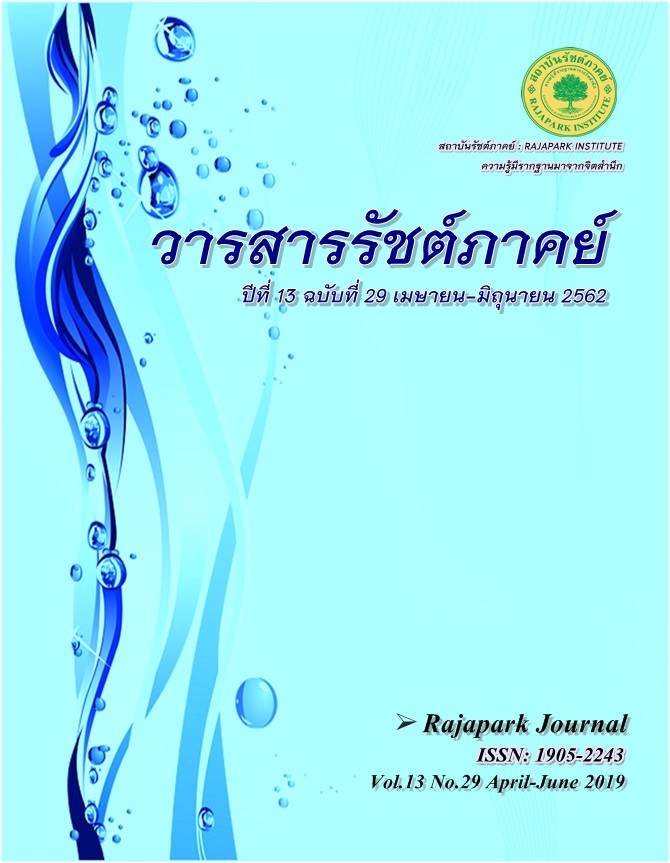Dispute Settlement in South China Sea between ASEAN and China
Main Article Content
Abstract
The purpose of this research is to study the background and importance of dispute and the method to settle dispute in South China Sea, covering the five ASEAN nations (Malaysia, Indonesia, Philippines, Brunei and Vietnam) mainland China and United States of America. This research is qualitative research in the form of documentary research. The result of this research finds that ASEAN has tried to manage the dispute through dialogue and Consultation and has not yet been successful in playing mediating role due to lack of consensus among ASEAN members. Furthermore, ASEAN as a collective organization cannot be a joint party in solving the territorial disputes in the South China Sea swing to ASEAN members may have variegated interests and relationship with mainland China. Thus, the ASEAN members do not want to discontent and hostile to mainland China. During the 6th ASEAN – China Summit on 4 November, 2002 at Panompenh, Cambodia, ASEAN – China Foreign Ministers jointly signed The Declaration on the conduct (DOC) for all parties in The South China Sea and on 21st July 2011, ASEAN – China Foreign Ministers have ratified the guidelines on the implementation of DOC at Bali, Indonesia.
Article Details

This work is licensed under a Creative Commons Attribution-NonCommercial-NoDerivatives 4.0 International License.
Views and opinions appearing in the Journal it is the responsibility of the author of the article, and does not constitute the view and responsibility of the editorial team.
References
Acharya, A. (2001). Constructing a Security in the South China Sea: ASEAN and the Problem of Regional Order. London: Routledger.
Dosch, W. R. (2004). Maternal Control of Vertebrate Development. Connecticut: Oxford University Press.
DuBrin, A. J. (1984). World Problem Structuring Methods for Complexity, Uncertainty, and Conflict. Betherada America Water Resources Association.
Emmers, R. (2003). ASEAN Regional Forum (ARF): Comparative Security and the Balance. Singapore: Nunyang Technological University, Routledge Curzon.
Ganeson, N. (1995 and 1997). Bilateralism Versus Multilateralism in Southeast Asia. Hiroshima: Hiroshima City University Press.
Leifer, M. (1988). ASEAN and Security in Southeast Asia. Michigan State: University of Michigan Routledge Hall Incorporated.
Ministry of Foreign Affairs of the Lao People’s Democratic Republic. (2016). Laos’s ASEAN Chairmanship. Vientiane, Lao PDR: Blue Garres and Cybeba.
Pareno, R. (2017). U.S. Extends SIM Aids for Philippines Maritime Security. The Philippine Star, March 17, 2017.
Terada, T. (2003). Constructing and East Asian Concept and Growing Regional Identity from EAEC to ASEAN+3.” Pacific Review, 16(2), 251-277.
Weatherbee, D. E. (2005). International Relations in Southeast Asia: The Struggle for Autonomy. Maryland: Rowman & Littlefield Publisher, Inc.
Yost, K. L. (2013). Tensions in the South China Sea: Why the Philippines Is Challenging China’s Improved Military Might. Master of Arts in Security Studies (Far East, Southeast Asia, the Pacific), Naval Postgraduate School.


